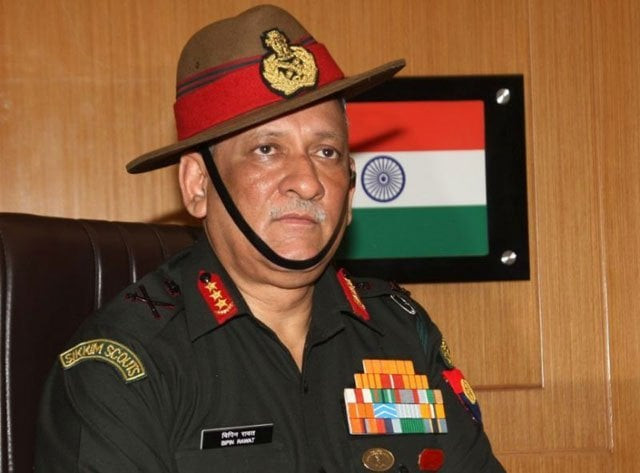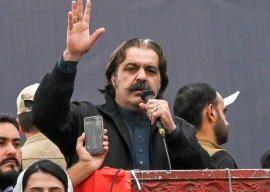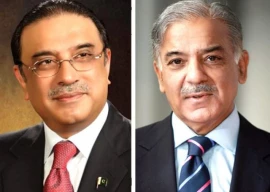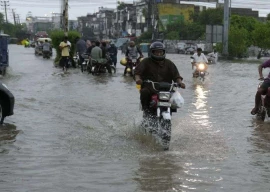
In an interview on January 4, Rawat raised a new conflagration in strategic community of India and elsewhere by officially blowing up the lid over the “Cold Start” doctrine. Though it didn’t come as a surprise to Pakistan, it was largely believed to be a concept or one of the plans.
India’s army chief hurls more sinister threats
“The Cold Start doctrine exists for conventional military operations. Whether we have to conduct conventional operations for such strikes are a decision well-thought through, involving the government and the Cabinet Committee on Security,” Rawat had said. Thus far, it was a formally unofficial and politically unsanctioned doctrine of limited war developed in the mid-2000s after the terrorist attack on Indian parliament.
For a layman, the Cold Start doctrine aims to deny Pakistan justification to resort to its nuclear first-use option by inflicting rapid, fatal and limited attacks. Indian strategists themselves explained in various papers that the plan would be initiated by eight “battle divisions”, comprising 30,000 to 50,000 troops, including independent armoured and mechanised brigades. The air force and naval aviation would accompany the land forces in the single or multiples strikes in a limited area till the objectives are achieved “within hours”.
Though operational details remain classified but the leaks available and analyses of think-tanks reflect that India believes that it can paralyse or limit Pakistani response by mobilising three to five battle groups, at best divisions, entering its territory within 72 to 96 hours of the issuance of order. Delhi perceives that such successive and swift attacks will confuse the Pakistani troops while breaking their formational cohesion and forcing them to make more mistakes.
Fashioned on German blitzkrieg of 1940s, the Indian troops expect to puncture the Pakistan defences by making “shallow territorial gains of 50-80 km deep” in “bite and hold” tactic. The fictional aggressive plan banks on the presumption that Pakistan won’t exercise nuclear option at such early hours of outbreak of hostilities. Another Indian presumption is that even if Pakistan uses tactical nuclear weapons invading troops, they would explode on its own territory in a “double jeopardy”.
Pakistan faces India-sponsored terrorism: FO
Some experts believe that Pakistan’s tactical nuclear devices cannot and would not be mobilised to the operational areas as standby weapons. While on one hand, Indian experts assume that Pakistan won’t deploy low-yield nuclear arms due to risk of terrorists stealing them, the proponent of Cold Start hope that advancing Indian troops might seize them before being authorised for firing even if available with forward battalions. While a good number of Indian experts undermine efficacy of Pakistan’s tactical nuclear arms, others refer to Cuban Missile Crisis whereby the US President Kennedy decided against using the doomsday option. They believe after suffering the damage and mulling over the response for too long, it won’t be feasible option for Pakistan with international players intervening for ceasefire.
The reference to the Cold Start doctrine is anything but a slip of tongue, given Narendra Modi’s posturing against Pakistan at multiple levels. Like Atal Bihari Vajpayee laid bare India’s nuclear weapons capability, his successor from the Bharatiya Janata Party has turned another page. Rawat spoke with the government’s political authorisation. The obvious question as to what would India gain from shunning the ambiguity around the military doctrine can be answered with the fact that Delhi is doubtful about Pakistan’s response and is thus trying to scare her with an aggressive but conventional manoeuvre. It’s worth mentioning here that India has declared policy of no-first use of nuclear weapons.
By declaring “proactive strategy options” along more aggressive and offensive lines, Delhi is warning Islamabad against any plan to rely on “non-state actors” to achieve its objectives as was allegedly done with Mumbai attacks in 2008.
Before going into the Pakistani response, it is important to analyse if India’s military has developed the fancied capability of swiftly launching intensive, integrated punitive limited strikes in bite-and-hold fashion? The doctrine has never been tested except for on-paper war-games in India’s military schools. Such a plan can’t deliver without intensive real-time drills in similar terrain and simulating probable matching response. Rawat’s disclosure indicates that the troops will be readied to launch such Blitzkriegs.
Modi asks Pakistan to ‘walk away from terrorism’
Leaving aside Indian troops morale, lack of pre-requisite training and hazards of terrain, the general may have to wait until his men achieve technological superiority over the rivals. His troops exercise numerical advantage but not of capability. From military trucks to armoured vehicles, the calculus is not in India’s favour as per its own defence experts as well as general favourable western analysts. The question of integrated strikes by air and naval forces is more difficult one for Rawat’s men to address. Invading Pakistan and coordinating attacks in Kargil-Drass sector are two entirely different scenarios. It was India which last lost a fighter plane to Pakistani anti-aircraft fire in 1999.
Firstly, Pakistan has spent a decade preparing for various perceived scenarios of Cold Start. The Strategic Plans Division and a foot soldier both have been battle ready. On the contrary, except for UN peacekeeping, where else has Indian military been actively engaged in formational battles?
Secondly, General Rawat’s statement is being read with Modi’s remarks about China-Pakistan Economic Corridor as well as Balochistan. It would be lame of any country to develop tactical nuclear weapons without chalking out mechanism to authorise their use and keep them stored far from crucial battlefronts.
Thirdly, India-watchers in Pakistan share one common trait with their counterparts: they also don’t read the statements from the other side on face value. Since Vajpayee tested nuclear weapons, there has not been a time that Pakistan believed India’s stance of no-first use. Thus, Islamabad must be prepared for Delhi opting to nuclear first-use and ever more so with hardliners like Manohar Parrikar, Ajit Davol and Sushma Sawraj at the helm.
Modi threatens to ‘isolate’ Pakistan globally
Fourthly, the pronouncement of Cold Start doctrine at the time Pakistan and China are engaged in building a logistical corridor gives Islamabad yet another reason to fine-tune its preparedness for a capability that India does not possess but claims. Rawat will, meanwhile, have to address ration shortages, morale issues and replacement of obsolete tanks and artillery pieces.
Lastly, Cold Start doctrine has been India’s biggest liability since the day it was first pronounced. Delhi has repeatedly accused Pakistan of terrorism from Mumbai, Pathankot to Uri but was devoid of requisite military readiness as well as political will to deliver what the doctrine assured. Along the way, Pakistan has significantly upgraded its defence preparedness from inter-service coordination to refinement of doctrines and battlefield management.
Naveed Ahmad is a Pakistani investigative journalist and academic with extensive reporting experience in the Middle East and North Africa. He is based in Doha and Istanbul and tweets @naveed360

















COMMENTS
Comments are moderated and generally will be posted if they are on-topic and not abusive.
For more information, please see our Comments FAQ